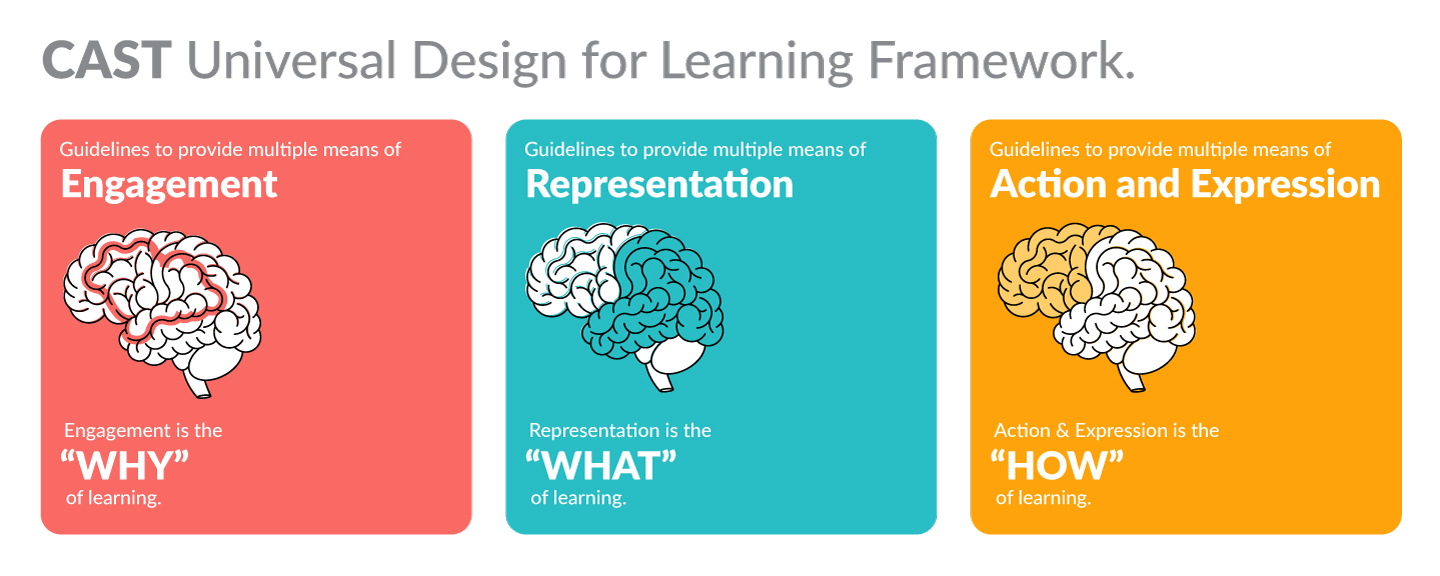Universal Design for Learning
At Humber, Universal Design for Learning (UDL) is integral to institutional goals because it is a robust and comprehensive approach for ensuring teaching and learning is inclusive, responsive and learner-centered. All Humber faculty should become familiar with UDL and practice the fundamentals of UDL when planning curriculum.
“Universal” design means design for everyone. Watch the following short video to gain an introduction to UDL now:
The three UDL principles, and their associated guidelines and checkpoints, provide a structure to proactively design flexible pathways and provide options that can support all learners by addressing barriers to learning. You can find the UDL principles, and their associated guidelines and checkpoints, on the CAST website.

-
Guidelines to provide multiple means of Engagement
- Engagement is the "WHY" of learning.
-
Guidelines to provide multiple means of Representation
- is the "WHAT" of learning.
-
Guidelines to provide multiple means of Action and Expression
- is the "HOW" of learning.
Take a closer look at the three main principles of UDL now.
- Provide multiple means for the learners to engage with learning.
- Represent learning materials in multiple ways.
- Allow students to progress through, and demonstrate, their learning in multiple different ways.
Use many different strategies to engage learners, from setting personal goals, to exploring rationales for learning and different kinds of applications, to fostering a community of learning. Your learners should feel that they belong, they are valued, and they are motivated.
Present materials to learners using a variety of methods, from text readings, to podcasts, to video, to infographics and other visuals. This style of presentation ensures that all learners will have multiple ways to access their learning, and they can choose the modality that best suits their needs.
Give your learners options for moving through the learning—for example, perhaps they can skip some introductory materials if they already have a firm grasp on the information. Ensure assistive technologies are available so that everyone can customize their learning experience to suit their needs. Then, when assessing learners, allow them choice and flexibility in how they demonstrate learning whenever possible.
As you can see, UDL is all about flexible, customizable approaches to address barriers to learning. Simply present your teaching in multiple different ways, and allow your learner to engage in and demonstrate learning in multiple different ways.
If you like, you can read “Inclusive Instructional Design: Applying UDL to Online Learning” by Kavita Rao to learn a step-by-step approach to course design using UDL principles. If you are interested in taking a deeper dive into UDL and how it should be applied in your practice, contact Innovative Learning for resources and training.